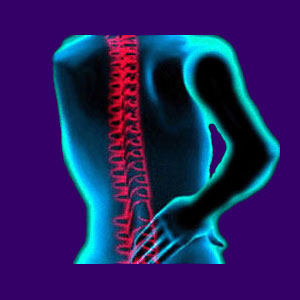
Repetitive stress back pain is common for people who work very physically intensive jobs. Repetitive motion can occur with almost any type of work, but is usually more severe with vocations involving manual labor. The cause of pain can vary and the severity can range from minor to debilitating. The full range of RSI concerns can be found on our page titled repetitive strain injury.
It should be noted that repetitive stress conditions are still highly controversial, since many doctors interpret the laws of physical fitness to tell that repetition of a physical activity will strengthen, not injure, virtually any anatomical structure. There is quite a bit of logic in this argument, especially since many repetitive stress diagnoses are made in support of some form of litigation.
This essay explores repetitive motion as a contributor to chronic back issues.
What is Repetitive Stress Back Pain?
This condition is created when we perform a given motion over and over again throughout our day. This repeated motion might involve the back muscles directly, such as bending or lifting. The motion might also involve the back muscles in a less obvious role. Walking, running, reaching and sitting are perfect examples of less obvious back muscle involvement.
The amount of pain will often be determined by the destructive potential of the activity. Repetitive sitting should not cause anything worse than minor muscle pain, unless there is another underlying cause, such as a herniated disc in the lumbar spine. On the other hand, lifting lumber in a construction yard exhausts muscles and degenerates discs and vertebrae quickly. This hard manual labor has the potential to cause severe back pain, especially if the back muscles are in poor condition to begin with.
Muscular Repetitive Stress Back Pain
Muscular pain is the most common form of repetitive motion symptom. Muscles fatigue and begin to build up lactic acid and other waste chemicals. Lactic acid makes muscles feel sore and tired.
Oxygen deprivation back pain is another common effect of repetitive motion. The muscles are working beyond the body’s ability to oxygenate them. Oxygen deprivation can cause chronic pain at low levels, or super acute flare-ups of muscular back spasm at high levels. It should be noted that this form of ischemia is purely anatomically-motivated and is not part of the mindbody causative process.
Degenerative Conditions and Repetitive Stress
Hard labor will often wear down spinal bones and discs at an accelerated rate. If this describes your type of work, then there may be very little you can do to prevent it. The best strategy is to stay healthy and build up strong muscles to help support your back.
Degenerative disc disease, spinal arthritis, degenerative spondylolisthesis, facet syndrome and herniated discs may all potentially be created through repetitive stress and motion. Know your limits and try not to push your body too hard.
If you do ask a lot of your body, consider hiring a physical therapist or fitness trainer to help you get in great shape. They may also be able to assist you in improving the efficiency of movement at work and better enable you to work safely with expert guidance which is custom tailored to your specific job description.
Resolving Repetitive Stress Back Pain
Here are some pointers on avoiding the possible effects of repetitive motion. Although these may not be applicable or practical for all jobs and activities, they will be useful for many. Take time to rest during the day. Try to break up your activity as much as possible. Do a little of one type of work, followed by a different kind of motion. Make sure to stay hydrated and stretch out before doing any hard labor.
If you are in a static position all day, such as sitting, take time to change your position every hour. If you normally do your work with your right hand, try switching off to your left every hour or so. You might be clumsy at first, but you will get the hang of it in no time.





